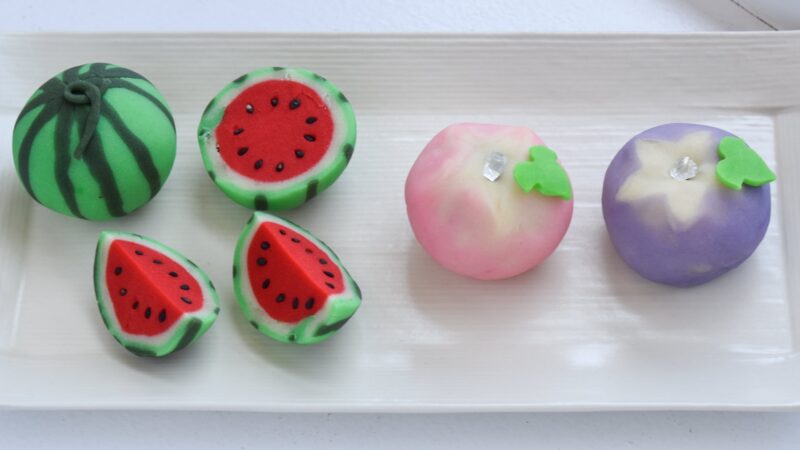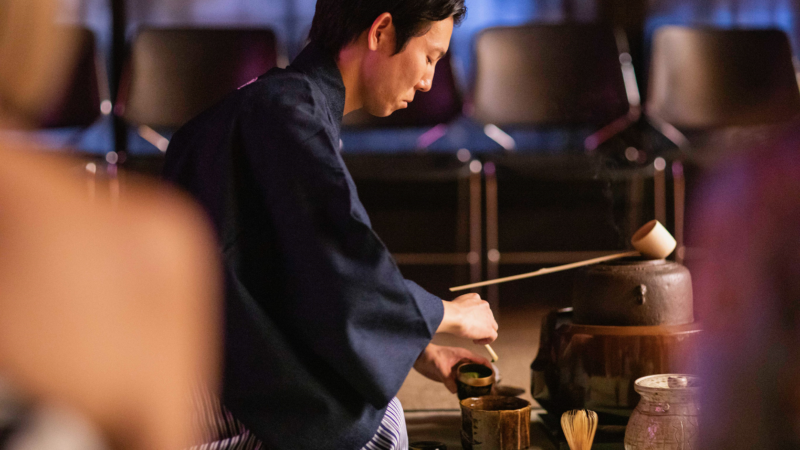June 20, 2014 ◆ Shuntaro Kondo
In my last article, I described a Tea Ceremony. This time, I would like to talk about what comes first in Teaism; examples will come from the Tea Ceremony I held in New York.
Do you know about “Cool Japan”? This is a project sponsored by the Japanese government to awaken Japanese culture globally. Avant-garde Tea Ceremony is a participating member of this project. The group has created original tea utensils in collaboration with young ceramic artists. These artists have been working in the ceramic industry, representing Japan for the last year. Together with unveiling these tea utensils completed in this project, we held Tea Ceremonies in an American colleague’s tea room, called “KeiSui-an (憩翠庵)” in Manhattan earlier in February.
The artists also joined in and we talked about their passions in creating their works personally with customers. Customers chose their favorite tea bowls from the collections. We can communicate only fragments of Teaism if we merely show works or offer drinks. So, I created the Tea Ceremony where people can see, touch, and experience Teaism first-hand.
 A total of 100 people participated, including Japanese people living in New York and non-Japanese New Yorkers. When I talked to them, I observed happy reactions. They expressed their strong appreciation and enjoyment. They never had the opportunity to participate in these kinds of events, even though they had been interested in Japanese culture.
A total of 100 people participated, including Japanese people living in New York and non-Japanese New Yorkers. When I talked to them, I observed happy reactions. They expressed their strong appreciation and enjoyment. They never had the opportunity to participate in these kinds of events, even though they had been interested in Japanese culture.
Actually, I lived in New York when I was a child. I lacked knowledge about traditional Japanese custom. In my adult life, I work with foreigners and I have been expanding my personal knowledge and expertise in everything about Japan.
For this reason, I chose “Teaism” since it captures Japanese culture in a variety of genres. I talked with some Japanese participants during the New York Tea Ceremony, and they expressed that they felt once again the depth of Japanese culture like I had. This was particularly special as they were able to look at Japan objectively from a foreign place. Thus, I think I would be able to tell the advantages if I go abroad and feel how foreigners look at Japanese culture, Tea Ceremony, and Teaism from afar.
It is interesting that many Japanese, even those who experience Teaism for the first time assume they somehow know the traditional rules, such as turning a tea bowl. On the contrary, a fixed concept—that Teaism is something difficult—is implanted into the Japanese people’s mind.
It goes without saying that foreigners do not know such rules; thus, they drink tea happily without worrying about the intricate details of Teaism. (It depends on each person if they feel the tea is delicious or not, so let’s set that aside, haha.)
In other words, it is foreigners who practice the most important thing in Teaism. I mentioned that Teaism is a “composite art” last time. What comes first in Teaism? Is it valuable utensils? A fine tea house? Sitting politely? Wearing a kimono properly?
None of those are correct.
The most important thing is to drink tea in an appreciating manner. The founder of Teaism, Grand Tea Master Sen no Rikyu (千利休) said,
「茶の湯とはただ湯をわかし茶をたててのむばかりなる事と知るべし」
(“Teaism is just to boil water, make tea, and drink it.”)
Don’t you think it’s a nice saying? If you try to drink tea, according to the rules as expected, surprisingly, there are a lot of processes. Yet, what is more important is to drink tea in the right spirit, which is made from the heart.
At the New York Tea Ceremony, I told everyone such a story:
“Everyone, do you know how to drink tea?” (Everybody made a gesture of shaking their heads, saying I don’t know.) “Is that so? But how to drink tea is as easy as 1-2-3! I mean, everyone has mouth, right? Yes! You can drink with your mouth!
That was a Japanese joke in response to an American joke! It seems that they caught the meaning as they laughed a lot. Yet, it is actually true. If you are obsessed with manners, you won’t be able to taste tea.
We will always be nervous when we try something for the first time and come into contact with foreign cultures; we will be at a loss. Thus, the way people interpret things differs significantly from how the originator conveys how to do it. So, I will suppress my desire to teach a lot. I’m happy for now if you just know that “Tea is delicious.”
This first step will suffice in letting you experience the depth of Teaism!







